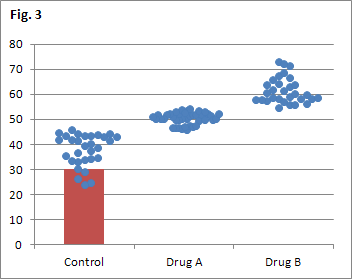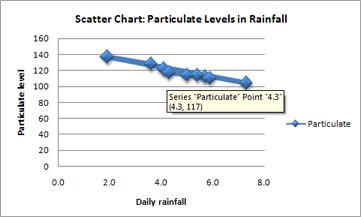

- #How can i add data to scatter chart in excel how to#
- #How can i add data to scatter chart in excel series#
By default, Google Sheets will open a graph that best fits the data, and in most cases, it will be a scatter plot graph. In Google Sheets, the chart icon appears as a small square with three vertical bars. Click on the chart icon in the menu at the top of the worksheet. Highlight the first column of data, hold the shift key, and then proceed to highlight the other columns you want to plot by left-clicking on their names. If a bar or line chart makes your data look a bit cluttered, a scatter plot graph could be the ideal solution. #How can i add data to scatter chart in excel how to#
How to Make a Scatter Plot Graph in Google Sheets These dots constitute the ellipsis of the graph. You should see three small dots in the top right corner of your scatter plot.

Sometimes, the chart editor sidebar may disappear once a scatter plot is created.
Scroll down and check the box next to “Trend line.”. From the resulting dropdown menu, click on “Series.”. In the chart editor sidebar, click on “Customize.”. Once you come up with a scatter plot in Google Sheets, a line of best fit can be added in a few simple steps: It reveals data points that are too far away from the line of best fit. It can easily show whether there’s an upward trend or a downward trend. If the variables are strongly correlated, the bulk of data points will be very close to the line of best fit. It helps determine if variables show evidence of a strong correlation (co-movement). The good thing with scatter plots in Google Sheets is that you can customize just about any aspect of a graph. How to Customize a Scatter Plot on Google Sheets At this point, there should be a scatter plot for the data. To convert the chart to a scatter plot, scroll down the dropdown menu and select “Scatter plot.” It may appear under “Suggested” or “Other,” again depending on Google’s default analysis of the data. Click on “Chart type.” A dropdown menu will appear. From the chart editor sidebar, select “Setup.”. In most cases, it will display a scatter plot. By default, Google is programmed to display the chart it deems best for the data. Accompanying the chart is a chart editor sidebar. In the resulting dropdown submenu, click on “Chart.” This will launch a chart on the spreadsheet, usually on the right-hand side of your data. In the menu at the top of your spreadsheet, select “Insert.”. To do so, click on the first cell and then drag the mouse over all the other cells you intend to graph. Highlight the data you want to plot in a chart. Next, divide the number of days over or under budget by 365 to calculate the percentage of a year in which the actual completion date is over or under the projected completion date, as pictured in column F below.How to Make a Scatter Plot in Google SheetsĬreating a scatter plot in Google Sheets is quite straightforward. 
Divide the budget variance by the total budget to calculate the percentage amount over or under budget, as pictured in column E above. Start by converting your variance data to percentage calculations to better fit your bull's-eye chart, as follows. (The menu options cited below apply specifically to Excel 2016 while this chart can also be created in Excel 2013, 2010, and 2007, the menu options may be slightly different.)ġ.
#How can i add data to scatter chart in excel series#
Excel does not offer a bull's- eye chart, but with a little trickery you can coax Excel into producing a reasonable facsimile by creating an Excel Scatter Chart (aka an XY chart) with data plotted to create a series of concentric circles, as follows. To better analyze and present these metrics, I'd like to plot them on a bull's- eye chart in Excel. Obviously, underestimating is a problem, but over- estimating is also a problem that leads to overbidding jobs, resulting in rejected job bids. As a conclusion to each project, we evaluate our project time and cost estimates for accuracy.







 0 kommentar(er)
0 kommentar(er)
